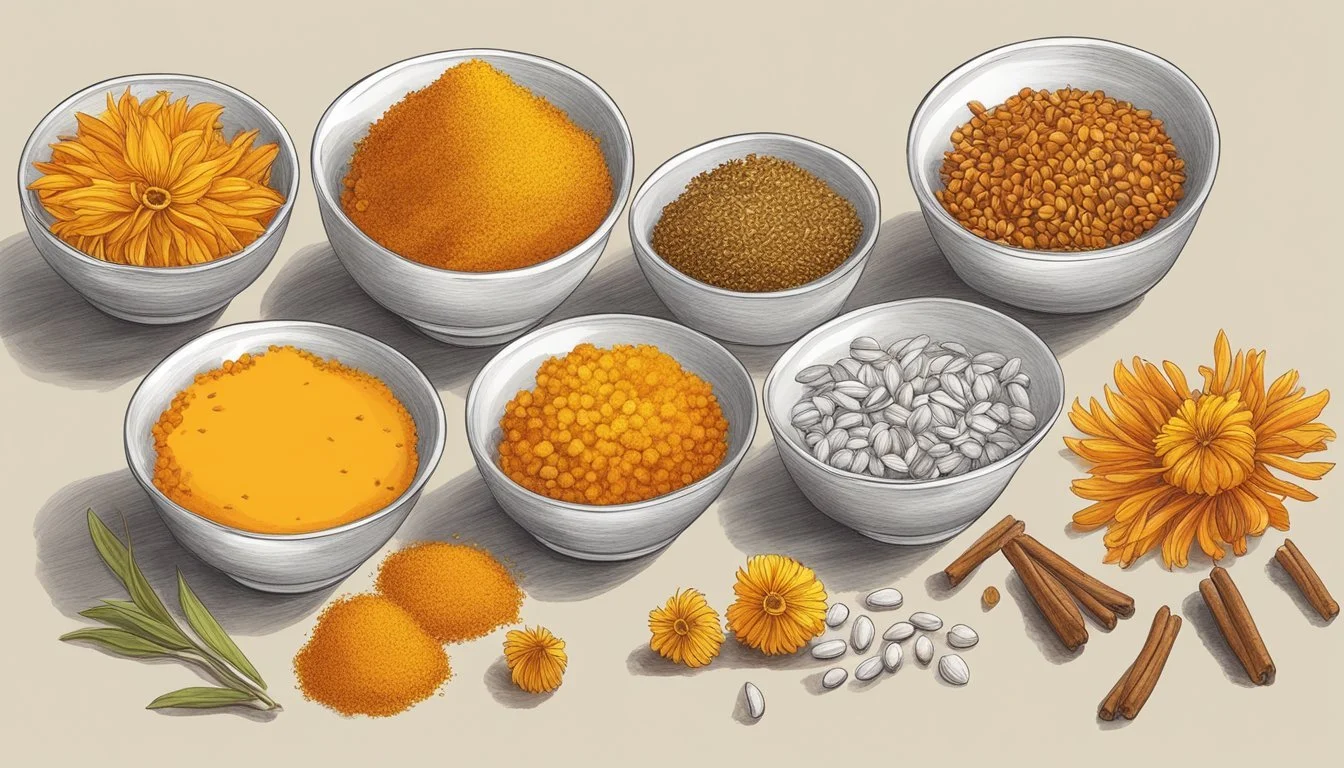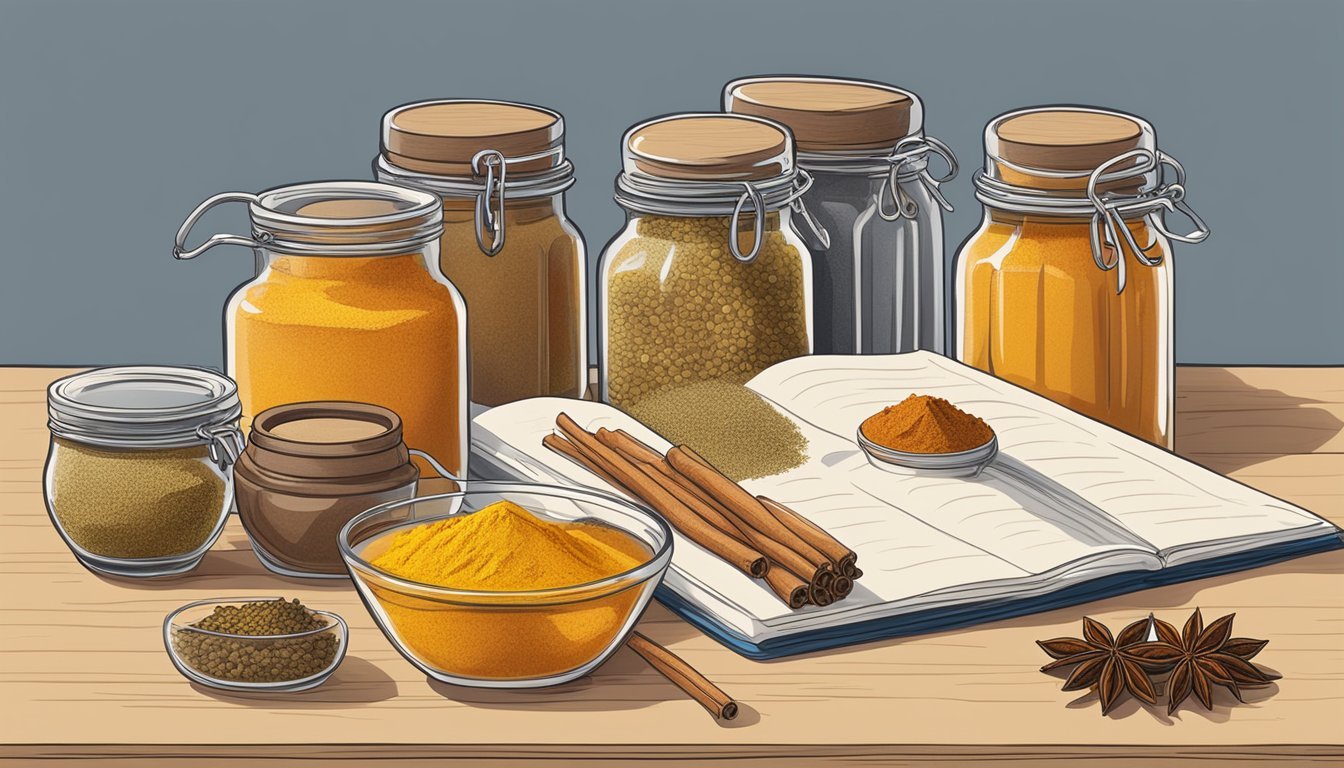Saffron Substitutes
Top Alternatives for Your Dishes
Saffron is notably one of the most sought-after spices in the world, revered not only for its distinctive flavor and aroma but also for the rich golden hue it imparts to dishes. Derived from the dried stigmas of the Crocus sativus flower, it has been a prized ingredient in culinary traditions across various cultures. However, its labor-intensive harvest coupled with a high demand results in a steep price, often making it an expensive addition to the spice cabinet.
Consequently, chefs and home consumers alike have explored a range of saffron substitutes that can mimic saffron's unique qualities. Substitutes such as turmeric, safflower, and annatto are frequently used for their color-mimicking properties. Turmeric, in particular, offers a warm, earthy tone with a vibrant yellow color, making it a popular alternative in recipes requiring the characteristic color of saffron. Annatto, with its slightly sweet and nutty flavor profile, provides a similar hue and is often referred to as "poor man's saffron."
These alternatives are not only more accessible but also provide an economical solution to achieving a semblance of saffron's culinary effects. While the taste may not be identical, opting for these substitutes is a practical adjustment for everyday cooking, allowing the creation of visually appealing and flavorful dishes without incurring the high cost of saffron.
Understanding Saffron
In this section, we explore saffron's unique characteristics, from its complex cultivation process to the nuanced flavors and health benefits it brings to dishes, and we examine the factors contributing to its status as one of the most expensive spices in the world.
Origins and Cultivation
Saffron comes from the delicate purple flowers of the Crocus sativus, a plant that thrives in specific climatic conditions that can be found in regions such as Iran, Spain, India, and Greece. The cultivation process is labor-intensive, involving the careful harvest of the saffron threads—the plant’s red stigmas—by hand, typically during a short annual flowering season.
Flavor Profile and Culinary Uses
Saffron is prized for its distinct flavor and aroma. It imparts a subtly sweet and earthy taste with floral undertones, which cannot be easily replicated. A small amount of the vivid crimson threads suffices to flavor and color an entire dish. Saffron is essential in traditional recipes such as Spanish paella, Italian risotto, and many rice dishes, where it complements ingredients like seafood beautifully.
Health Benefits and Nutritional Value
Saffron contains several vitamins and antioxidants, contributing to its potential health benefits, which include mood improvement and antioxidant properties. Even when used in small quantities in cooking, these threads can have a positive impact on health.
Economic Factors and Pricing
The high price of saffron is due to its intensive harvest process and the large number of flowers needed to produce a small amount. Roughly 150,000 flowers are required to yield 1 kilogram of saffron, justifying its status as the most expensive spice by weight. Despite the cost, its potent flavor profile and aroma make it a sought-after ingredient in many recipes around the world.
Common Saffron Substitutes
Saffron is prized for its unique flavor and vibrant color, but its high cost may lead to the pursuit of alternatives. The following spices offer similar hues and can impart a complementary taste in various dishes.
Turmeric
Turmeric, a staple in Indian cuisine, stands out as a saffron substitute, especially for imparting a vibrant yellow-orange color. Though its flavor is more earthy and pungent, it can effectively replace saffron in dishes like paella and curry powder blends.
Safflower
Safflower provides a comparable yellow-orange hue and is often referred to as "false saffron." While its flavor is much milder, it can mimic saffron's coloring effect in foods at a more economical cost, though it's suggested to use more safflower relative to saffron to achieve the desired color.
Annatto
Derived from the seeds of the achiote tree, annatto is a natural dye that furnishes an earthy flavor and is sometimes known as "poor man's saffron." Use it to introduce a similar color in dishes where the slightly sweet and peppery flavor profile is suitable.
Paprika Varieties
Sweet paprika can be used for both color and taste, providing an earthy flavor without overwhelming a dish. It is available in different varieties, with the sweet version being recommended at half the amount of saffron called for in a recipe.
Marigold Flowers and Calendula
Marigold flowers, closely related to calendula, are an excellent natural dye and saffron substitute. They yield a similar color with a floral flavor, which can add a saffron-like essence to various dishes without the high cost.
Other Spices and Herbs
Combining turmeric with other spices like sweet paprika can mimic saffron's complexity. Spices such as cumin, cardamom, coriander, and even chili pepper may not offer a direct flavor match but can contribute to the necessary depth in the overall flavor profile of dishes typically seasoned with saffron. Herbs and related plants like daisies can also be considered when crafting a substitute blend.
Selecting the Right Saffron Substitute
When choosing a saffron substitute, one must consider the intended outcome for the dish, whether it is to mimic the flavor profile, achieve a specific color, or both. The selection process varies greatly depending on the dish type, desired flavor, and color needs.
By Dish Type
Rice dishes such as paella or risotto benefit from substitutes that offer both a similar hue and taste to saffron. Turmeric can be utilized in such cases, providing a vibrant yellow color and subtle earthiness, although it adds a more peppery flavor. For soups and pasta, a floral and slightly sweet substitute like marigold is recommended, which mimics the color and taste without overpowering the dish.
By Desired Flavor
If one desires to maintain the distinct flavor of saffron, substitutes such as cardamom can provide sweet and savory notes, albeit with a piney undertone. For a more earthy flavor in dishes like grilled meats or soups, annatto serves well, often described as the "poor man's saffron." One might consider:
For sweet and floral notes: Cardamom (use sparingly due to its intensity)
For earthy undertones: Annatto (use in powdered form for ease)
By Color Needs
The primary role of saffron in some recipes is as a food coloring to provide a yellow-orange color. When the color is more important than the flavor, turmeric or safflower are effective. They deliver a close visual match to saffron, making them perfect for coloring rice or sauces. The ratio for using turmeric is about a quarter to half a teaspoon to replace a teaspoon of saffron, to avoid a bitter taste if overused.
How to Use Saffron Substitutes in Cooking
When cooking with saffron substitutes, one needs to consider flavor and color, as saffron imparts both to a dish. While each alternative has distinct qualities, they can still yield delightful results when used correctly.
Sweet Paprika: It can offer a comparable color, but its taste is milder than saffron. To substitute, use half a teaspoon per one teaspoon of saffron.
Cardamom: It can contribute a complex flavor to dishes, similar to saffron's sweet notes, but it possesses a more earthy undertone. Moderation is key due to its potent taste.
Turmeric: Turmeric is known for imparting a robust yellow hue and an earthy flavor reminiscent of saffron, albeit less floral.
Saffron Quantity Turmeric Substitute 1 tsp 1/4 tsp turmeric + 1/2 tsp paprika
Safflower: Often referred to as "poor man’s saffron," its coloring properties are comparable to saffron. For a similar color effect, use a larger quantity of safflower than you would saffron.
Annatto: This substitute is known for its vibrant color and slightly nutty, peppery taste. It acts as a good colorant in recipes and can pass as saffron in some dishes.
Marigold and Calendula: Both can be dried and powdered and provide a good substitute for saffron’s color. They should be used in a 1:1 ratio as a saffron replacement.
Each alternative offers a different aspect of saffron's profile, so it's best to tailor the choice of substitute to the specific needs of the recipe, whether it's more flavor or color focused. Experimentation and taste adjustment are key when one is replacing saffron in cooking.
Conclusion
When cooking a recipe that calls for saffron, rest assured that several viable alternatives can offer similar flavors and hues to your dishes. The most common saffron substitutes include:
Turmeric: Provides a brilliant yellow color and a warm, earthy taste, although it is less nuanced than saffron. Ideal for rice dishes and curries.
Safflower: Known as "poor man's saffron," it imparts a comparable yellow coloring, best used in larger quantities than saffron.
Annatto: A red hue similar to saffron with a hint of nutty, peppery flavor.
Cardamom: Imparts sweet, floral notes suitable for a variety of recipes, both sweet and savory.
Sweet Paprika: Adds a subtle earthy sweetness with a reddish tint.
Curry Powder: A mix of spices, often with turmeric as a base, adds deep yellow color and complex flavors.
The choice of a substitute should consider the recipe's balance of flavors and the desired color outcome. These substitutes may affect the final dish's taste profile, so chefs should adjust according to taste preferences. Cooking is an art of experimentation, and replacing saffron is an opportunity to explore different ingredients and discover new favorite flavor combinations.




